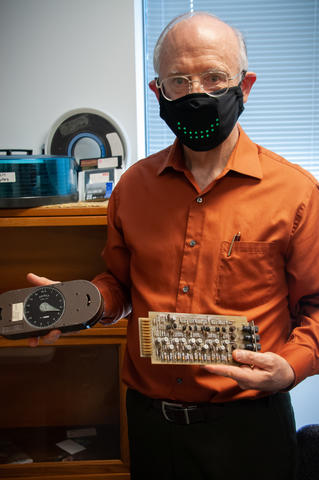
Get to know NIST’s bug killer, versed in multiple languages of the digital world and ready to tackle programming’s pests.
In 1971, Paul E. Black took a class that changed his life. As a teenager growing up in the slide rule’s heyday (before electronic calculators), he happened upon a subject few people studied at the time: computer programming. He loved the idea that you could put a snapshot of your thoughts into a machine and get it to do things — and he’s been into it ever since.
Paul spent several years of his early career at a company where he wrote programs that let engineers design computer chips far more quickly. Similar to the way a map program finds routes for your car, one of his programs traced all the routes from each gate or memory bit to the other gates and bits it was connected to (among other things). He loved the programming, but people around him were not as obsessed with correctness as he was. This bothered Paul, who has a particular aversion to software bugs.
Considering this aversion, it was natural for his career path to carry Paul from Silicon Valley, through Ph.D. studies and finally to NIST. Along the way, he picked up a fluency in C, Python, ML, Java, C++, Forth, RPG II, Fortran, assembler and more.
Here, Paul is part of a group dedicated to helping software behave correctly and identifying defects in it. For 22 years, he’s researched methods to find and exterminate bugs in complex projects dealing with networking, software configuration control and more. He has also spent time developing a collection of computing history, including the parts he holds in this photo from NIST’s Standards Electronic Automatic Computer, a first-generation computer built more than 70 years ago.
Fifty years after high school, Paul is thinking about teaching programming when he retires someday — in part for his own benefit. After all, someday he may need a pacemaker or ride in a self-driving car. Why wouldn’t he want such life-critical devices to work correctly, especially as he’s in a position to help?
Follow us on social media for more like this from all across NIST!

